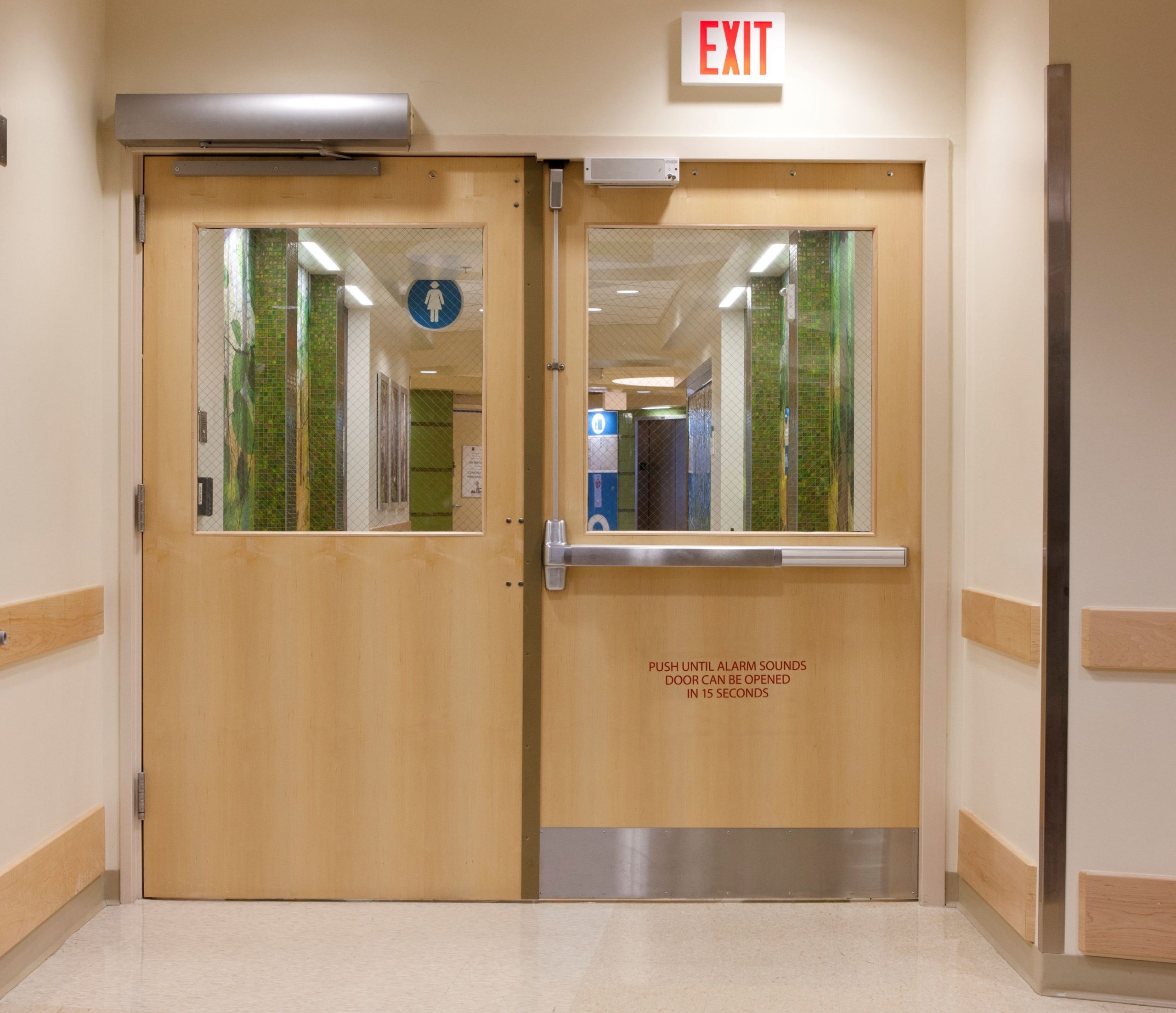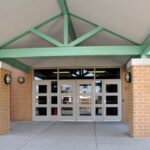In this month’s Decoded column for Door Security + Safety Magazine, I answered a question about the difference between fire door inspections and egress door inspections. If you have a code question you’d like to see answered in my column, you can submit it by visiting iDigHardware.com/decoded-qa.
This post will be published in Doors & Hardware

In recent years, there has been increased focus on the fire door assembly inspections required by the model codes and NFPA 80 – Standard for Fire Doors and Other Opening Protectives. Current codes and standards mandate these inspections after installation, after maintenance work, as well as annually.
NFPA 101 – Life Safety Code addresses an additional type of door inspection, which is getting some attention because of a new state law in Ohio. The Childhood Safety Act requires certain doors in Ohio schools to be inspected annually, with the documentation of the inspections made available for review by the authority having jurisdiction (AHJ). Which brings me to this month’s Decoded question:
What is the difference between the fire door assembly inspections required by the model codes and NFPA 80, vs. the egress door inspections addressed by NFPA 101?

Doors with special locking arrangements are one of the types of openings that must be inspected annually in accordance with NFPA 101, where required by the applicable occupancy chapter.
Occupancy Types
Fire Door Inspections: Inspection and testing of fire door assemblies is required by the model codes and NFPA 80 for opening protectives in all occupancy types. In some cases, smoke doors may be required to be inspected annually in accordance with NFPA 105 – Smoke Door Assemblies and Other Opening Protectives.
Egress Door Inspections: For jurisdictions that have adopted NFPA 101, the code has included requirements for the annual inspection of specific egress door assemblies, beginning with the 2009 edition. The 2024 edition of the Life Safety Code requires the inspections for the following occupancies: Assembly, Educational, Day-Care, Residential Board and Care, Hotels and Dormitories, Apartment Buildings, Mercantile, Business, Industrial, and Storage. Note that the requirements for egress door inspections in residential board and care facilities vary slightly from the other occupancy classifications.
Door Assemblies
Fire Door Inspections: The fire door inspection requirements apply to all fire door assemblies installed in locations where an opening protective is required by code. If a labeled fire door or frame is installed in a wall that is not required to have a fire resistance rating, NFPA 101 does not require the assembly to comply with NFPA 80 nor to be inspected annually. Requirements for fire door assembly inspections are found in Chapter 5 of NFPA 80.
Egress Door Inspections: The requirements for annual inspections and testing of egress doors apply to specific openings: doors equipped with panic hardware or fire exit hardware, exit enclosure doors – typically stairwell and exit passageway doors, electrically controlled egress doors where the electrified hardware is released by a switch in the door mounted hardware, and doors with special locking arrangements such as delayed egress locks, locks released by a sensor, controlled egress locks in health care facilities, and fail safe locks on doors serving elevator lobbies. Requirements for egress door inspections are found in Chapter 7 of NFPA 101.
For some door openings, NFPA 101 requires both fire door inspections and egress door inspections. Annual inspections of egress doors are not currently mandated by the International Building Code (IBC) or International Fire Code (IFC), although all doors in a means of egress must be kept in code-compliant condition at all times. The I-Codes do require fire door assemblies to comply with the inspection requirements. The IBC states that fire door assemblies must be installed in accordance with NFPA 80, and the IFC specifically references the inspections: Opening protectives in fire-resistance-rated assemblies shall be inspected and maintained in accordance with NFPA 80.
Inspection Criteria
Fire Door Inspections: NFPA 80 currently includes 13 criteria for fire door assembly inspections. Prior to the 2013 edition of the standard, there were 11 inspection items listed.
1. Labels are present and legible.
2. No open holes or breaks in the door or frame.
3. Glazing and glass kit / glass beads are intact and securely fastened.
4. Door, frame, and hardware are in proper working order.
5. No missing or broken parts.
6. Door clearances are within allowable limits.
7. Door closer / spring hinges are operational and the door is self-closing.
8. Coordinator ensures that door leaves close in proper sequence (pairs only).
9. Door is self-latching in the closed position.
10. Opening is not equipped with auxiliary hardware items that interfere with operation.
11. No field modifications have been performed that void the label.
12. Gasketing and edge seals, where required, are present, continuous, and of the proper type for a fire door.
13. Signage on the door is compliant with the referenced version of NFPA 80. Note that the requirements for signage size and methods of attachment have changed in recent editions of the standard.
Egress Door Inspections: NFPA 101 also lists 13 criteria for the inspection of the egress doors fitting the description above, but the items to be verified are not the same as those required for fire door assemblies.
1. Door opens and closes freely, with clear floor space on both sides of the opening.
2. Opening force is within allowable limits.
3. Latching and locking devices comply with the requirements of the code.
4. Hardware used to release the latch(es) is mounted between 34 inches and 48 inches above the floor (existing installations may be below 34 inches, and some state code requirements vary).
5. Pairs of doors have hardware that allows the door leaves to be operated independently, or automatic flush bolts in accordance with the code.
6. Closing speed is within the limits of the accessibility standards.
7. Encroachment of the door into the egress path is compliant with the code.
8. Automatic doors meet the requirements of the code and the referenced ANSI/BHMA standards.
9. Required signage is present and legible.
10. Door openings with special locking arrangements function in accordance with the code.
11. Security devices that impede egress are not installed.
12. Luminous egress path markings are present and intact, where required by the code.
13. Where emergency lighting is required for doors with special locking arrangements, it is present and functional.

Some openings may be subject to the inspection requirements for both fire door assemblies and egress door assemblies.
Documentation and Remediation
Fire Door Inspections: NFPA 80 requires new and existing fire door assemblies to be inspected when they are installed, after maintenance is performed, and each year thereafter. The standard includes detailed requirements for the information that must be included in the inspection report. The inspections must be conducted by a qualified person, which is defined as: A person who, by possession of a recognized degree, certificate, professional standing, or skill, and who, by knowledge, training, and experience, has demonstrated the ability to deal with the subject matter, the work, or the project.
Egress Door Inspections:
NFPA 101 requires the egress doors described previously to be inspected annually, with the inspection and testing records signed by the inspector and made available to the AHJ. Testing must be performed by individuals who can demonstrate knowledge and understanding of the operating components of the applicable type of door.
For both types of inspections, the NFPA codes and standards allow a performance-based program to be implemented. This type of program may allow the inspections to be conducted less frequently, but the program must be approved by the AHJ.
Inspection Benefits
Inspecting and testing doors, frames, and hardware helps to ensure that the door assembly is installed properly and functions as designed and tested throughout the life of the building. Without these inspections by a qualified person, a door that has been damaged or modified in a non-code-compliant way may not perform as expected during a fire or other emergency. Egress through a door with special locking arrangements could be affected if the system is not installed and programmed correctly.
It is important to check the adopted codes and referenced standards for a specific jurisdiction to see if there have been changes made to the inspection and testing requirements. States and local jurisdictions may modify the model codes, and AHJs may also implement specific mandates to help ensure the safety of buildings. Refer to the adopted codes and standards for detailed requirements.
You need to login or register to bookmark/favorite this content.










What would be super, would be a ‘print’ icon for the article. I’ve learned a lot from your articles and the site was recommended by the facility Fire Marshal. I like especially when codes are included, this helps cut-to-the-chase…
Hi Arthur –
Your browser should have the option to print a post, but I will see if I can add an icon to make it easier. Thanks for the suggestion!
– Lori